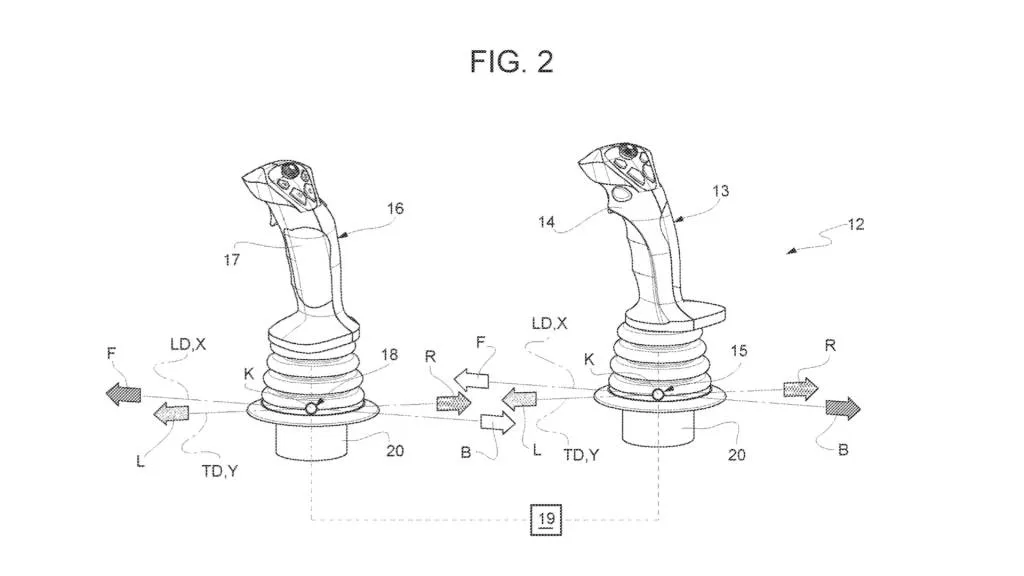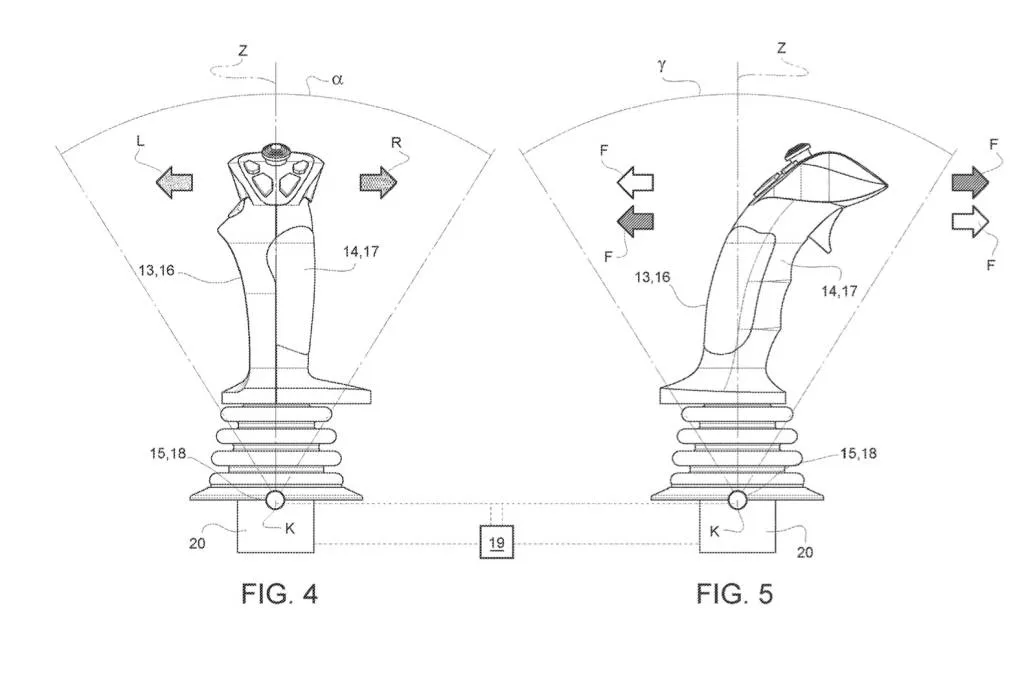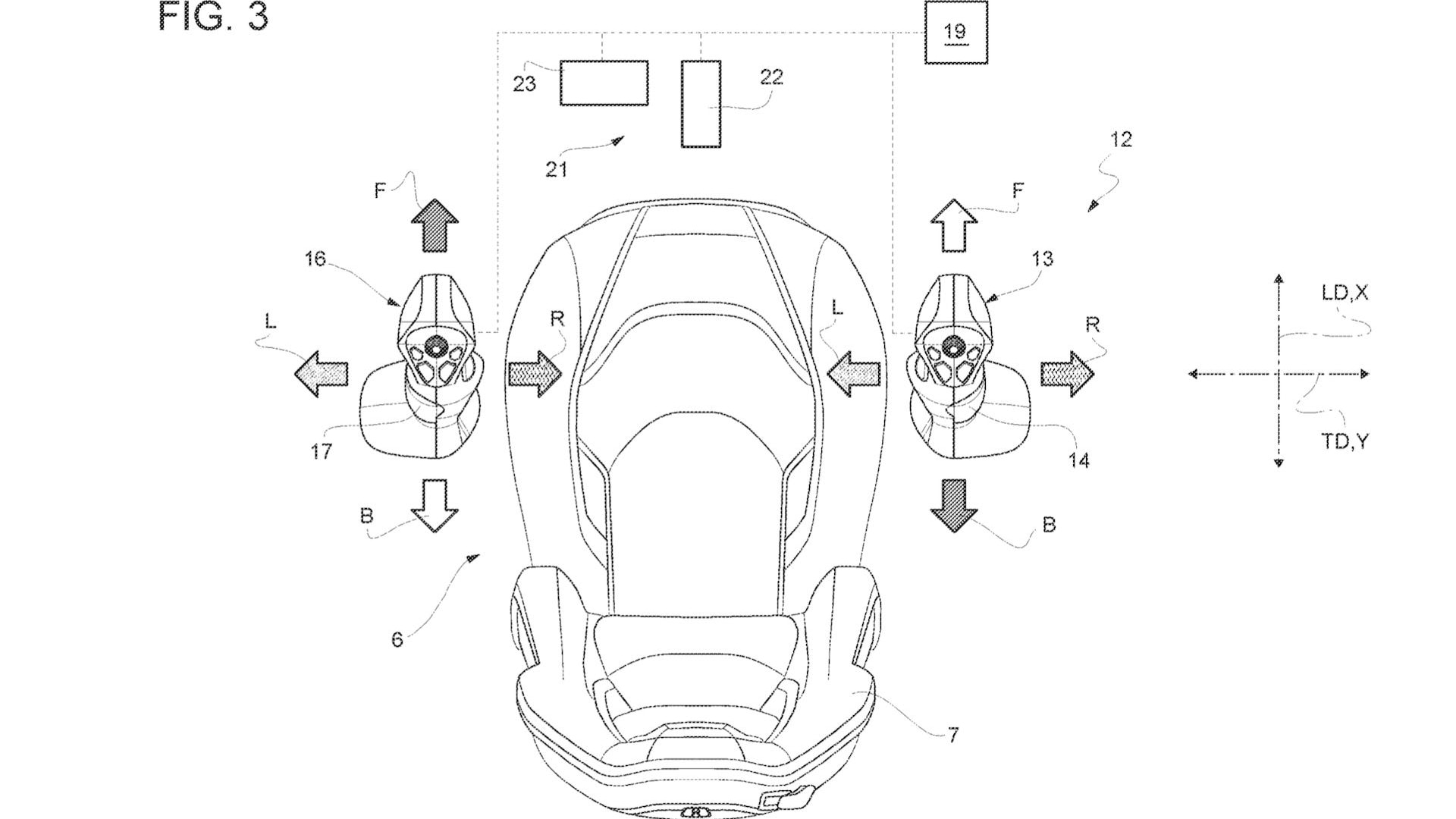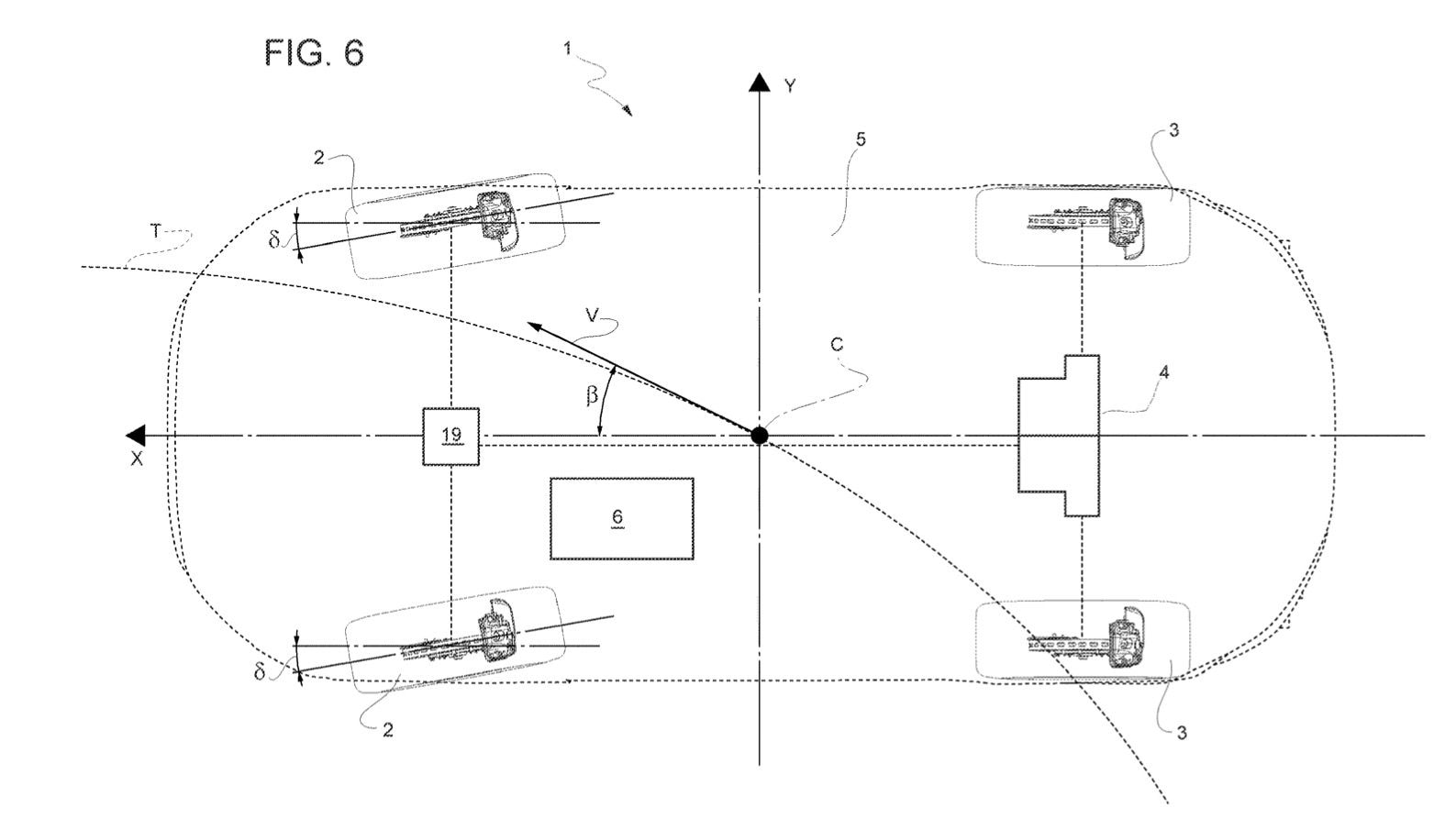As Tesla backs away from its steering yoke and Lexus moves forward with a version of its own, a recent Ferrari patent application hints at an even more radical steering system.
Published by the United States Patent and Trademark Office (USPTO) on Nov. 16 and originally filed on May 8, the patent filing in question describes a system for a controlling a car with two joysticks.

Ferrari joystick control system patent image
A joystick would be located on either side of the driver's seat, and moving them in combination would allow the driver to control the direction the car turns and the yaw angle—in other words, how sideways it gets. Acceleration and braking could be controlled by traditional pedals, or using buttons or triggers mounted on the joysticks, according to Ferrari.
Ferrari is a little vague on the advantages of such a system but claims it is technically feasible. Joysticks are already used to control forklifts, Ferrari notes. What the automaker doesn't address is a previous attempt at joystick control. Saab actually built a prototype car with a joystick as part of a European program aimed at improving car safety. The joystick proved difficult to use, though, and was quickly dropped.

Ferrari joystick control system patent image
More recent attempts at steering-wheel alternatives have focused on yokes, with Tesla installing them in the Model S and Model X and Lexus making them part of a new steer-by-wire system. In the application, Ferrari dismisses the yoke as a purely stylistic choice because it can't perform its intended function in a car. Yokes are typically used in aircraft, where they can be pushed forward or backward to control pitch. That's the angle of the nose in relation to the ground—something that's not supposed to change in a car.
Yet while it's unclear if Ferrari's joystick control system will ever see production, Lexus is moving ahead with its steering yoke. It's launching in the Lexus RZ 450e electric crossover, although it isn't available in the U.S. for now.




